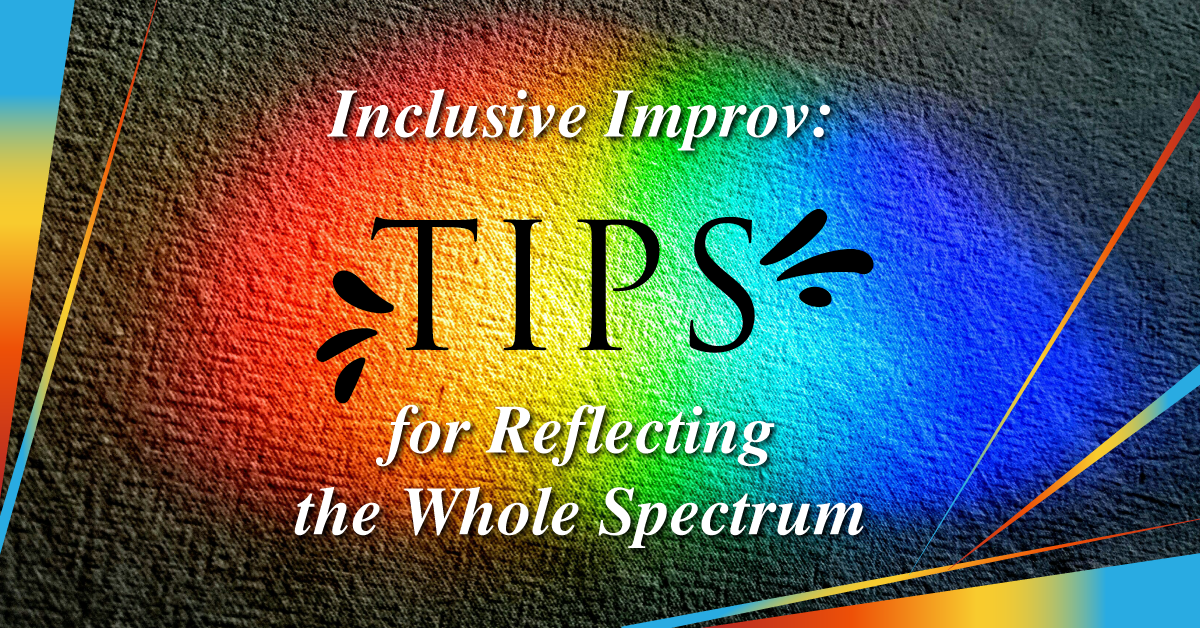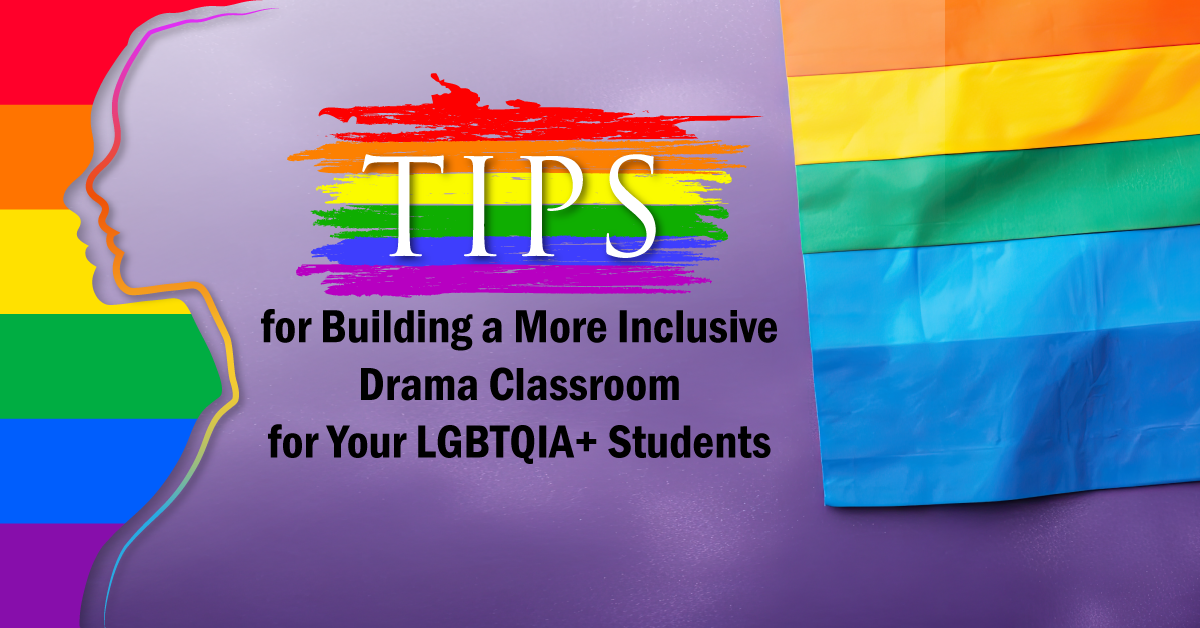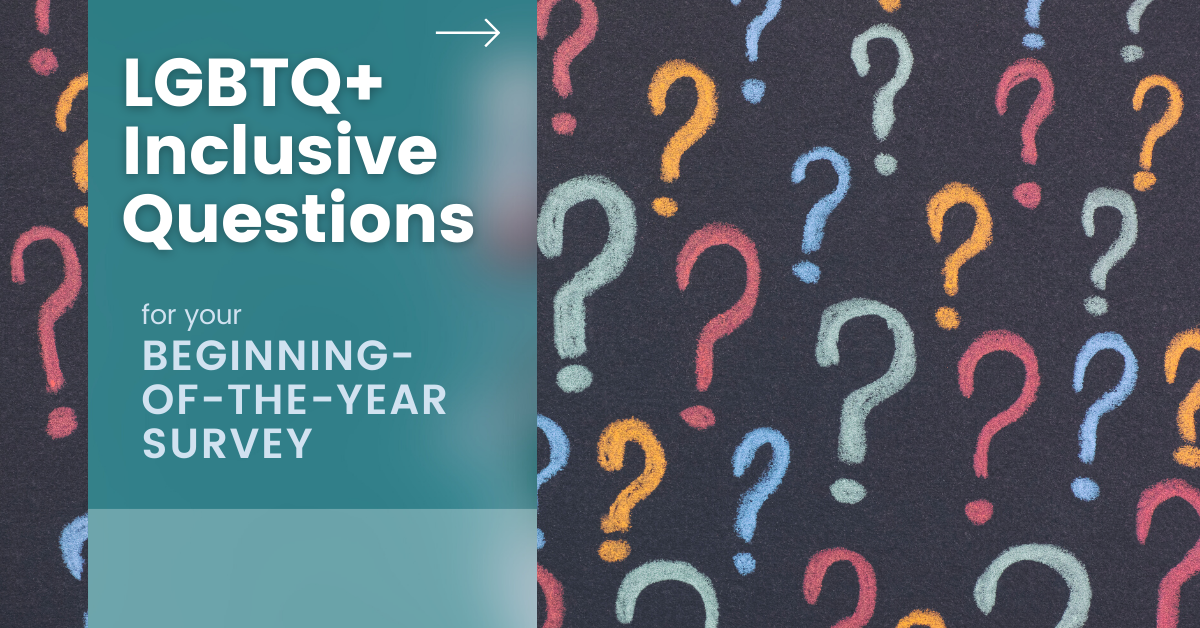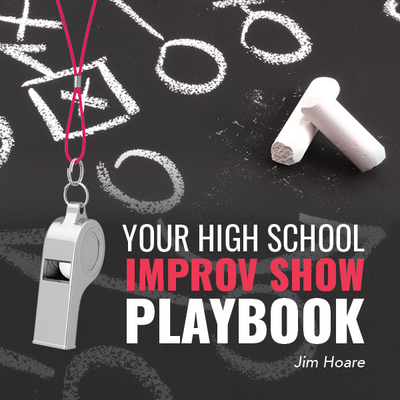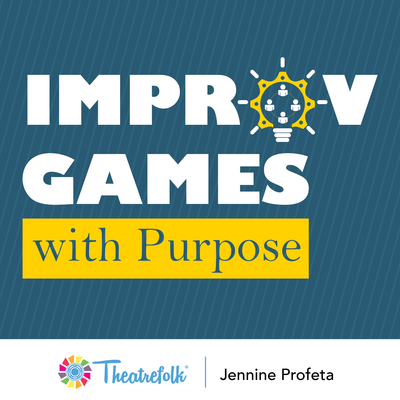Horror Movie 101: Failing Can Be Deadly by Steven Stack is a chilling mix of horror and humor - perfect for student performers and the spooky season! 👻
Inclusive Improv: Tips for Reflecting the Whole Spectrum
Improv is meant to be a fun and creative way to express oneself in the drama classroom. It’s a great way to “try on” a wide variety of characters and situations in a fast-paced, low-stakes environment. For LGBTQIA+ students and others from marginalized communities, however, it can feel risky — beyond the usual risks we encourage our students to take. Stereotypes, assumptions, and other negative behaviour from students can creep in, unless we set a clear foundation for respect, safety, and inclusion.
Inclusive improv isn’t meant to shut down humour or block creativity; it’s about opening up a wider and more respectful range of stories. When students know their identities are safe onstage, they’ll feel more comfortable taking creative risks and bringing their whole selves into the work.
Here are some simple, practical ways to make sure your improv work reflects the spectrum of identities and experiences in your drama classroom.
1. Establish ground rules and boundaries as a group.
Before you start improv work (or really, any collaborative work) with your students, come up with a set of community agreements that reflect what you want the classroom atmosphere to be. Include guidelines such as “We don’t make fun of people’s identities,” “We respect each other’s boundaries,” and “We remember to follow the ‘Yes, and…’ rule for improv, but we also reserve the right to say ‘No, but…’.”
Remember, community agreements are a “living document” and can always be reviewed, updated, and adapted as needed.
2. Normalize all identities.
Use neutral prompts whenever possible. For example: “Two students studying for a difficult exam” or “A group of scientists about to discover something terrifying,” rather than “A guy and a girl go to the movies together” or “A mom and dad discuss homework with their daughter.” This opens up more opportunities for interpretations of the prompts, on top of allowing students to play a role in whatever way they feel comfortable doing. You’ll find more neutral prompts in the giveaway below.
If gender identity is relevant to the scene, let the students choose how they want to play it. For example, if a student says in a scene, “My moms are picking me up from school today,” or “Alex wants to help me bake a cake, but they’re not great in the kitchen,” affirm it in a neutral manner and go with it. Model this yourself when giving examples as well. Ensure students are portraying all identities in a respectful manner. Which leads us to our next point…
3. Interrupt harmful stereotypes.
Sometimes students might unintentionally (or intentionally) portray a character in a stereotypical or caricature-like way, for example, “the sassy gay best friend.” If this happens, stop the scene gently but firmly and address the issue immediately. You might say something like, “Let’s pause here. This is leaning towards being a stereotype, and that’s not where we want to go.” Have a brief discussion to turn it into a learning moment: “How could we re-approach that character to be more honest and real?”
4. Encourage students to reflect.
After improv sessions, have your students respond to reflection questions in a discussion or as journal prompts. For example:
- Identify moments of inclusivity today. Why did those moments stand out to you?
- Did we represent a wide range of people in today’s exercise? Why or why not? What could we do differently next time?
- Were you a supportive scene partner/audience member today? If yes, give examples. If not, how could you be more supportive in the next class?
Related Articles
Your High School Improv Show Playbook
by Jim Hoare
Have you wondered how to take improv to the next level with your students? Your High School Improv Show Playbook is the "how-to" guide for you! Empower students to present their first improv show that is fun and entertaining for all.
Impowerment Improv
by Jennine Profeta
Using improv to create self-awareness & confidence in your students
Improv Games with Purpose
by Jennine Profeta
Improv games including feedback suggestions and questions, game variations, teaching tips, side coaching tips, entry prompts, exit slip questions, and more!
